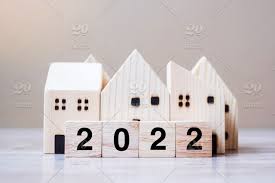 Although real estate is seen as one of the most stable and profitable markets in the U.S., it is not immune to major cyclical changes. This has been especially true during the pandemic, which dramatically affected inventory and property prices across the country. However, the market may be shifting soon, and it’s important to keep an eye out for upcoming trends.
Although real estate is seen as one of the most stable and profitable markets in the U.S., it is not immune to major cyclical changes. This has been especially true during the pandemic, which dramatically affected inventory and property prices across the country. However, the market may be shifting soon, and it’s important to keep an eye out for upcoming trends.
To unpack these shifting market forces, 15 members of Forbes Biz Council shared their insights on the future of real estate and what trends they believe will impact the market in the coming years. Here are their predictions and how their fellow industry professionals can start preparing now.
1. Trading Shares
Trading shares of individual real estate assets is about to go mainstream. We currently are in the E*Trade phase of investing in commercial real estate. In the next year, we will transition to the Robinhood phase as real estate investing becomes more accessible. FinTech solutions are emerging that lower every barrier to entry for people to invest in the places we live, work and play. – Calvin Cooper, Rhove
2. Increasing Complexity Of Local Zoning And Permitting
The complexity of the local zoning and permitting process (i.e., municipalities and townships) will become increasingly more valuable to understand. Planning and zoning offices have a major influence in master planning that governs where real estate can be developed, how it can be entitled and for which intended uses or purposes. Engage directly with local planning departments! – Bryan McLaren, Zoned Properties, Inc.
3. Natural Disasters
Natural disasters will change the desirability and pricing of real estate. For example, the California wildfires have resulted in home fire insurance rates skyrocketing near forests that have flammable trees such as the eucalyptus tree. In the meantime, I expect the increasingly dire hurricanes and storms in Texas, Florida and Louisiana to hurt neighborhoods that tend to be consistently impacted by them – Deniz Kahramaner, Altasa
4. Secondary Market Revitalization
With population growth shifting to secondary markets and beyond, these communities often need a revitalization of their commercial districts, older neighborhoods need to be redeveloped as well as new assets to support demand. Well-positioned investors and developers can act upon these opportunities. – Anne Keshen, RMT Capital Management
5. More Smart Homes
We are going to see more adoption of smart home technology and self-showings, and we will continue to see more investors embrace 3D virtual tours. I think 3D is just scratching the surface in the single-family rental industry, and in five years, every property will have a 3D tour that will be used for both operations and marketing purposes. – Kori Covrigaru, PlanOmatic
See Trends 6-15 [Source: www.forbes.com}




